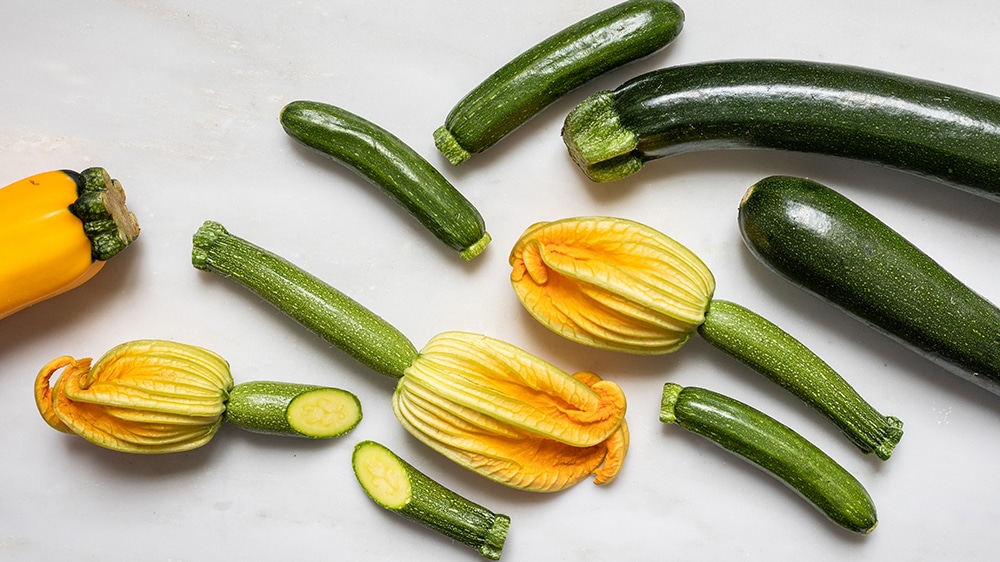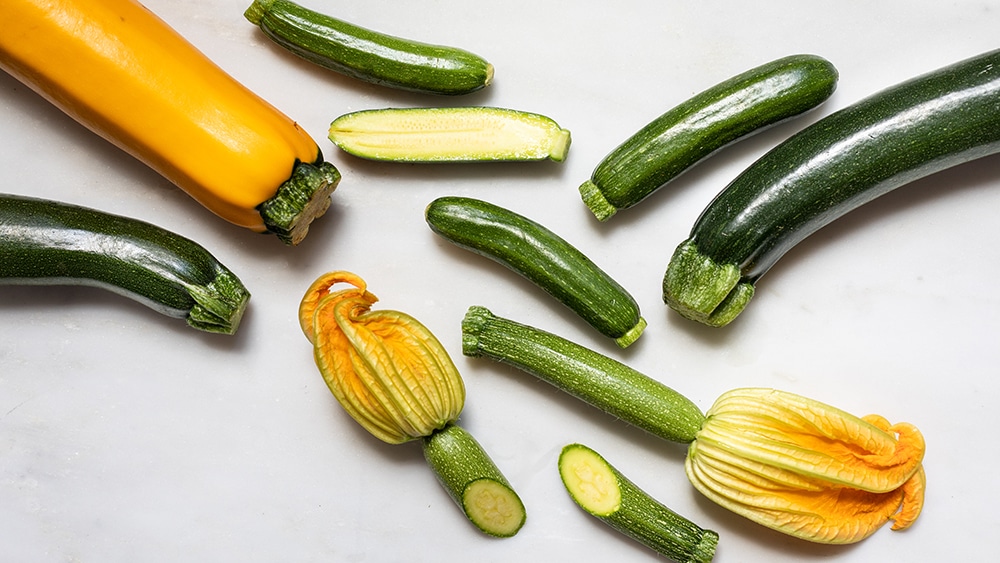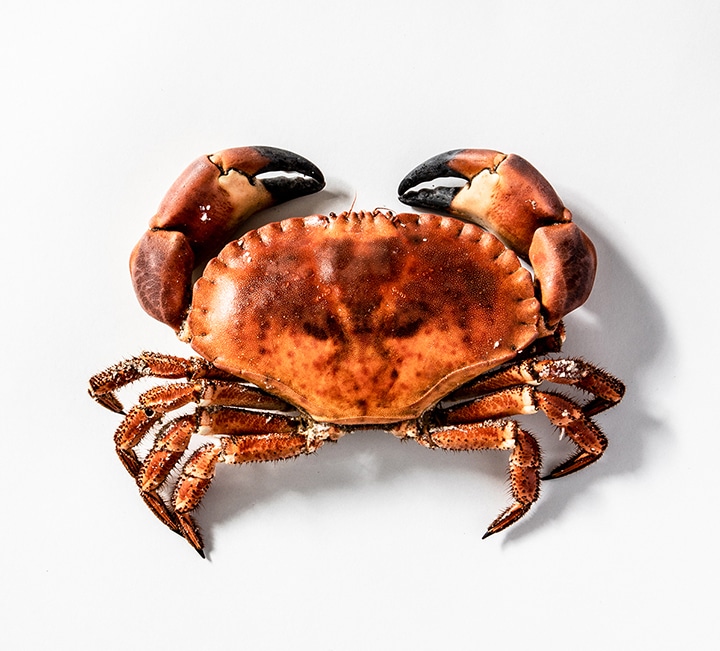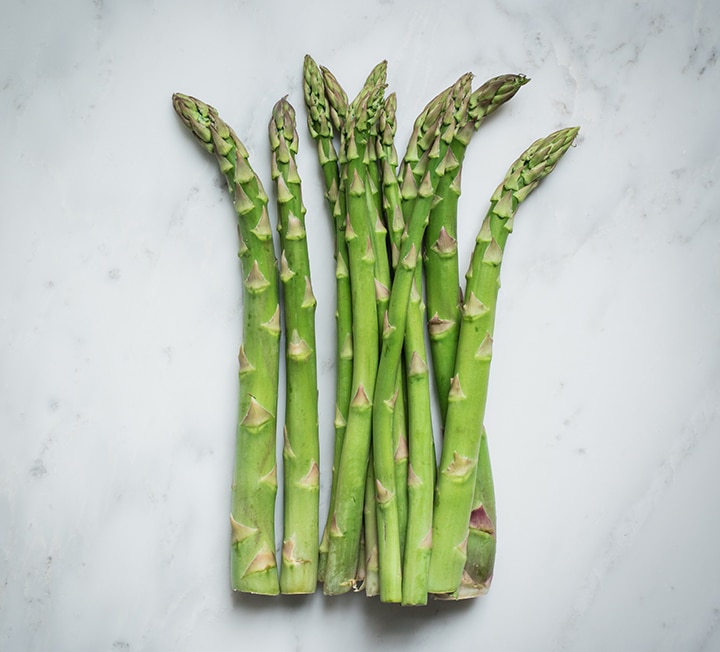All or nothing
Thom Eagle on why the best approach to courgettes is to either cook them into total submission, or else leave them alone


“I THINK THAT THIS APPROACH – TO COOK VERY THOROUGHLY, IF YOU ARE GOING TO AT ALL – IS BEST FOR MOST VEGETABLES”
Images: Regula Ysewijn
That until relatively recently this country favoured the thick-skinned bulk of the marrow over the courgette, whether in its flowering immaturity, its firm sweetness or through its juicy peak, has always struck me as peculiarly and doggedly British.
The apparent efficiency of allowing the vegetable to grow to its maximum volume, which really makes sense only when preparing for a competition at a traditional country show, is made a nonsense of when you consider that anyone who grows courgettes has, at the height of the summer season, far more than they know what to do with, and that many of the most successful recipes for them involve reducing their volume as far as possible, in an often vain attempt to make some dent in the glut. It is remarkable, if you are not used to it, how quickly vegetables grow, with the weather on their side – only a handful of days separate the fruit from the flower.
At the restaurant the other day I made a pasta sauce from romane courgettes, ridged and slightly stubbly, a couple of kilos of them grated and cooked over a high heat with olive oil and garlic in a slightly-too-small pan so they steamed more than they coloured, stirred the whole time as they gained in intensity what they lost in mass; those couple of kilos made only enough sauce to coat six people’s pasta, but the colour was bright lime and its flavour the essence of courgette.
My father makes a dish that is nothing more than thickly sliced courgettes, thinly sliced tomatoes and some form of grated cheese, all layered up together, and the tomatoes bleed their rich umami into the juices as they all braise their way into softness. Sometimes the best thing to do with vegetables is to cook them right down into total submission, and marvel at the depth of flavour – although sometimes the best thing to do is to leave them alone, at least as far as cooking goes.
If you have a lot of quite small courgettes – perhaps the bright yellow ones, but at any rate thin-skinned and very fresh – shave them all on a mandolin or with a vegetable peeler into Rizla-thin collapsing ribbons. Your boxful is now a bowlful, into which you can massage coarse salt, lemon juice, mild red pepper flakes, olive oil and mint, in that order, and leave to sit happily for an hour or so while they merge into a whole somewhere between a salad and a relish. It will sit happily alongside a very plainly roasted chicken or a fresh white cheese for a lunch or outdoor dinner that tastes of a brisk summer’s day.
On the whole, I think that this approach – to cook very thoroughly, if you are going to at all – is best for most vegetables, from the gnarled roots of winter to summer’s snappy fruits. It stems as much from the traditional British approach to greenery as it does from the more recently (for me) acquired Italian taste for braised and stewed vegetables of all kinds, preferably eased along with plenty of oil or pork fat, and perked up with anchovies, capers, olives, or just a sharp dose of lemon or vinegar – a good one, as sweet as it is sour.
It is the braising and the dressing, of course, that makes the overcooking worthwhile, allowing all the flavours to penetrate the softened flesh of your bobby bean, your aubergine, your chicory, your courgette or even your marrow; if you are going to plainly boil a vegetable it is best to err on the side of crunch, and allow texture and colour to make up for any deficiencies in flavour.

In some restaurants, summer is all about the somewhat frenetic practice of blanching and shocking green vegetables – cooking them briefly in briskly boiling salted water and then bathing them in ice to immediately stop the cooking. This is fine in the professional context of high volumes, or if there is something else you intend to do to your green beans, say, on their way to the plate, but I must admit I shudder slightly when I read articles advising cooks to do so at home.
Few things have their flavour improved by a dip in iced water, and in any case the logistics of doing so in a small kitchen – of gathering enough ice, suitably large containers, utensils to retrieve and to stir and to strain, and so on – seem to outweigh the efficiency of the operation, at least in my experience. I like my home cooking to be a little more relaxed, so I scoop my just-underdone green beans straight from the water and into the frying pan, to nestle in the garlicky oil while little twists of pasta cook in the same water; I would, in any case, never boil a courgette.
If I was disparaging earlier about the marrow, it is perhaps in memory of boiled cubes of the vegetable, overgrown, overcooked and under-seasoned, leaking the remains of their flavour into the edges of my school dinner, and the same treatment serves its younger cousin no better, even with salt and cooking time more carefully regulated; the water simply brings out its watery nature.
If you must cook your courgettes al dente then it is better to do so as near as possible to fire (though preferably not on a skewer with button mushrooms and chunks of sweet red peppers), and to let the heat and the smoke fill in the flavours that long cooking might otherwise provide. You don’t need to barbecue; I still have somewhere an old cast-iron griddle pan I acquired from my first professional kitchen on which countless slices of courgette have been striped with black, softened but still with a slight crunch, before being left to linger in lemon and oil to a warm room temperature.
A thick-bottomed pan of any kind will do the job, though, if you cut your courgettes into decent chunks – perhaps on see-sawing diagonals for a maximum of exposed flesh to caramelise and almost burn – and then coat them lightly with oil and heavily with seasoning to roll around the hot pan, kept for a minute on each cut side until they start to colour and smoke. You could pick the pieces straight out of the pan and toss them from hand to hand until cool enough to grasp between thumb and two fingers and dredge firmly through, say, taramasalata, seasoned yoghurt, or any of the pounded mixtures of nuts, spices and vegetables popular from Syria to Spain.
If you have a little more self-restraint, then tip the contents of the pan into a waiting bath, whether of vinaigrette, anchovy and tomato, or perhaps masses of thinly sliced onion, cooked gently with honey and vinegar. In any case, the point of a courgette is abundance, the expression on a plate of the generously trailing plant, so cook them in piles, and gather friends, and eat the heat of the summer.

